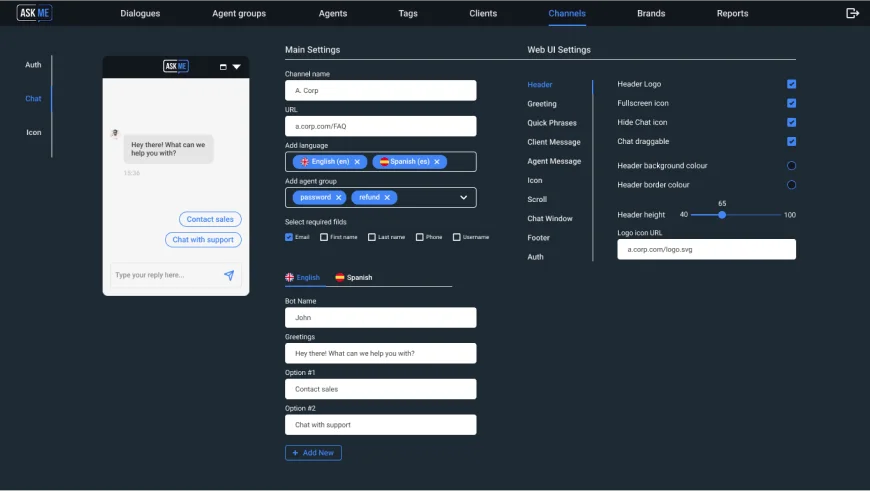Code Coverage Working Methods Advantages & Disadvantages
Code Coverage Working Methods Advantages & Disadvantages
June 8, 2023 Comments Off on Code Coverage Working Methods Advantages & DisadvantagesThe number of items tested, the items found in your code, and a coverage percentage (items tested / items found) are the most common code coverage metrics/ code coverage measurement. Code coverage is used to determine how much of the code has been executed. Static instrumentation is used by a code coverage tool, in which statements monitoring code execution are introduced at critical points in the code. Pragmatic discussions over specific lines of code not covered that take place during the code review process are more valuable than over-indexing on an arbitrary target number.

For developers, code coverage can help with dead code elimination and detection, while QA can help check uncovered or missed test cases. Striking 100 percent code coverage means the code is 100 percent bugless. No error indicates that test cases have covered every criteria and requirement of the software application. So, if that’s the case, how do we evaluate if the test scripts have met a wide range of possibilities? So, that drills down to the fact that, if a good software product built on 100 percent irrelevant test case coverage, then the software will undoubtedly compromise on quality. However, while code coverage tells you how much of your code is covered by tests, it does not tell you how effective those tests are or whether they address all failure modes.
Actionable fixes for everyone. AI now generally available for all Codacy Quality customers
Would result in a function coverage of 100% (because all of the functions we have — just the one — are being called with the test), but statement coverage of only 50%. To get the statement coverage up to 100% you’d need to test with an odd number as well so that the else branch would also be included in the test. Usually, coverage tools will https://www.globalcloudteam.com/ employ a few of them and report with the individual and average scores for your code. Code coverage alone is not sufficient to ensure adequate test coverage. Other metrics, such as functional and branch coverage, are also important. Whereas the definitive metric of quantifying how much of the application was really tested, is missed.
- Using code coverage analysis, development teams can provide reassurance that their programs have been broadly tested for bugs and should be relatively error-free.
- Therefore it makes sense to set progressively lower goals for unit testing, integration testing, and system testing.
- However, one should not blindly follow the goal of 100% coverage just for the sake of that number.
- Beginning in 2024, SLPs can report caregiver training services without the patient present when provided under an established, individualized, and patient-centered plan of care.
- For example, user-centric web apps prioritize UI/UX tests over functional tests.
A Line Coverage metric of 67% means the testing exercised 67% of all executable statements of the application. A Code Coverage metric usually is accompanied by Code Coverage Analysis Report – which helps identify the un-tested part of the application code, thereby giving the testers early inputs for complete testing. Generally in any software, if we look at the source code, there will what is code coverage be a wide variety of elements like operators, functions, looping, exceptional handlers, etc. Based on the input to the program, some of the code statements may not be executed. The goal of Statement coverage is to cover all the possible path’s, line, and statement in the code. Cobertura – an open source code coverage tool that can easily be coupled with JUnit tests to generate reports.
Code Coverage vs. Test Coverage
It can not guarantee that all possible values of a feature is tested with the help of code coverage. Just because your tests are going through all your lines of code doesn’t mean they’re testing every possible scenario, and thus you code can still be faulty. In general code coverage of a lot of products is below the bar; we should aim at significantly improving code coverage across the board. There is no “ideal code coverage number” that universally applies to all products. How do you achieve maximum test coverage in software development lifecycles? And there we have it, we’ve achieved 100% coverage in each of the four criteria!
You can attain higher code coverage during unit testing than in integration testing or system testing. During unit testing, the tester has more facilities available, such as a debugger to manipulate data and conditional compilation to simulate error conditions. Condition Coverage or expression coverage is a testing method used to test and evaluate the variables or sub-expressions in the conditional statement. The goal of condition coverage is to check individual outcomes for each logical condition.
Code Coverage vs Test Coverage
Nevertheless, be careful not to give the incorrect message, as putting pressure on your team to achieve adequate coverage could lead to poor testing procedures. Branches CoverageHow many of the control structures’ branches have been executed. Function CoverageThe number of times each of the defined functions has been called. In addition, this method verifies the number of times specific states are visited and transitioned. Furthermore, it determines the number of sequences considered in the finite state machine. The method is necessary for deriving scenarios based on the tested code structure.

Before going to production, it’s best to specify a minimum percentage of code coverage that must be met. This reduces the likelihood of bugs being discovered later in the development process. After a test run is completed, Xcode takes the LLVM coverage data and uses it to create a coverage report in the Reports navigator, seen in the Coverage pane. It shows summary information about the test run, a listing of source files and functions within the files, and coverage percentage for each. As we know at last of the development each client wants a quality software product as well as the developer team is also responsible for delivering a quality software product to the customer/client.
Who Needs Code Coverage?
It’s always easier to throw out and dramatically change features before they are tested. Beginning in 2024, SLPs can report caregiver training services without the patient present when provided under an established, individualized, and patient-centered plan of care. This proposed rule marks the first time CMS will allow therapists, including SLPs, to bill and receive MPFS payment for services without the patient present. CMS acknowledges the importance and efficacy of reasonable and necessary caregiver training to influence successful health outcomes for patients. Product owners have their money on the line; they have the most at stake when ensuring the product meets quality standards.

As they analyze this feedback, CMS proposes that institutional providers continue to bill for telehealth services as they did under the PHE through December 31, 2024. While there are many roles involved in delivering a software project, they all share the same ultimate goal—a successful, quality product. Code coverage offers owners an easy way to keep track of the bigger picture when it comes to quality. Even if they aren’t targeting 100% coverage, they can push to get it higher, and shake things up if the number drops too low. Software failure can be catastrophic in some fields, with strict rules governing how software is tested. There areother benefitsto increasing coverage too, such as educating developers and making refactoring easier.
Branch Coverage
Over the years it’s been adopted by hundreds of users, and you’re expected to maintain it and add features to it without harming existing users. CMS proposes to add both codes to the list of services that can be billed with an AB modifier when performed by an audiologist without a physician referral for a nonacute hearing condition. If code coverage is low, it offers an easy, understandable way for a team to improve. It never pays to rely on a single metric, and you should analyze each project as broadly as possible to best understand your overall code quality. Software test engineers are key drivers of increased code coverage, and are also responsible for making sure metrics are used wisely to deliver results.

Code coverage provides quantitative measurements that developers can use to assess the nature and health of their production code. Even when a particular feature is poorly implemented within the design, its report will still indicate 100% coverage. It is quite useful in evaluating the code coverage’s quantitative measure. Condition coverage, also called expression coverage, tells us how the variables or subexpressions in conditional statements get evaluated. The source editor shows counts for each line of code in the file and highlights code that was not executed. It highlights areas of code that need coverage rather than areas that are already covered.
Who Cares About Code Coverage and Why?
As a test engineer, part of your role is toadvocate for the customerand maintain the highest possible quality standards. You should always be looking for opportunities to increase code coverage to help hit your targets. By making sure tests cover everything, and reporting your findings to test engineers, you can leverage both your skill sets to improve your code’s reliability. This approach means you spend more time building new features and less fixing errors. For others, code coverage is a means of monitoring progress, or ensuring software meets technical and legal requirements.